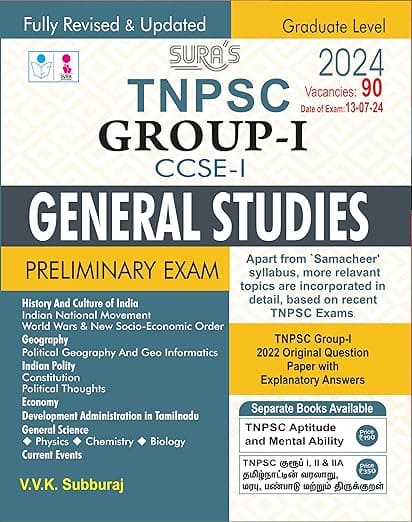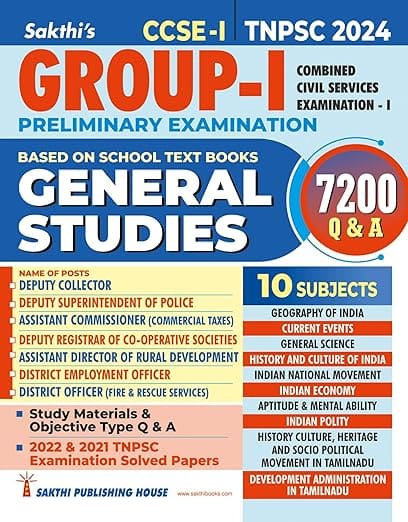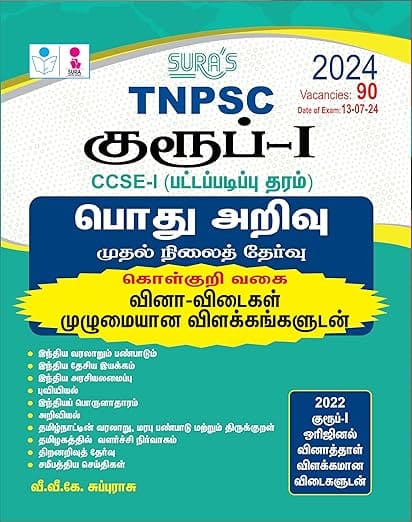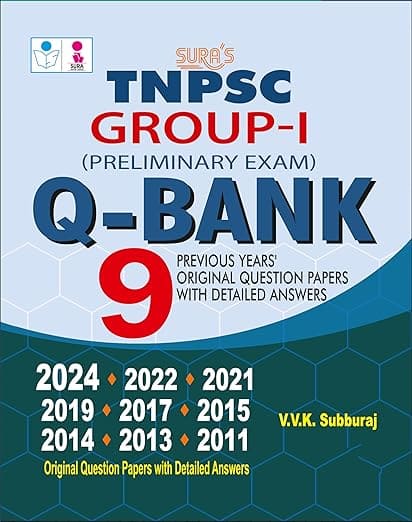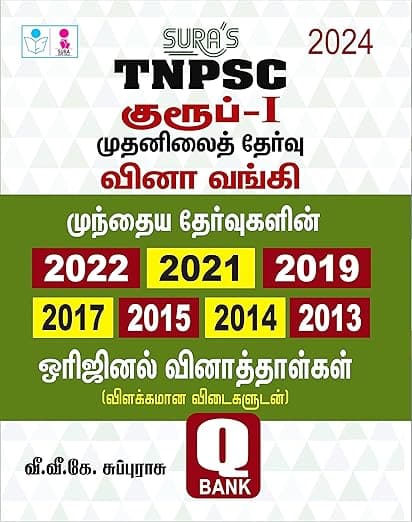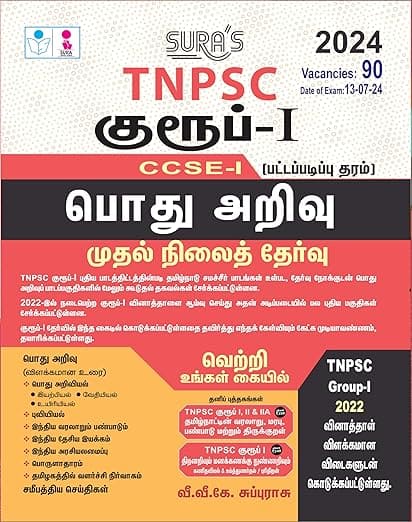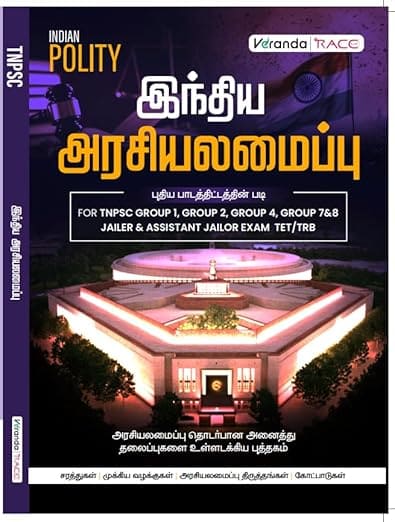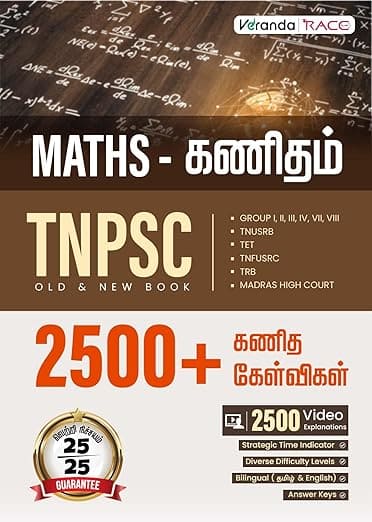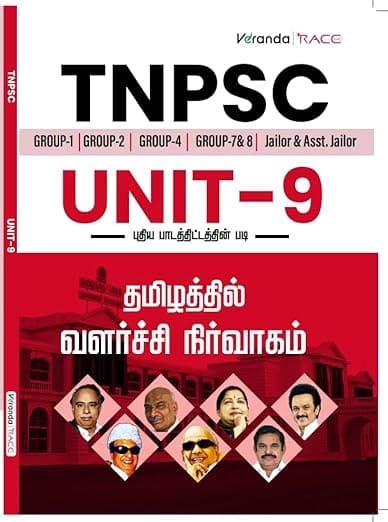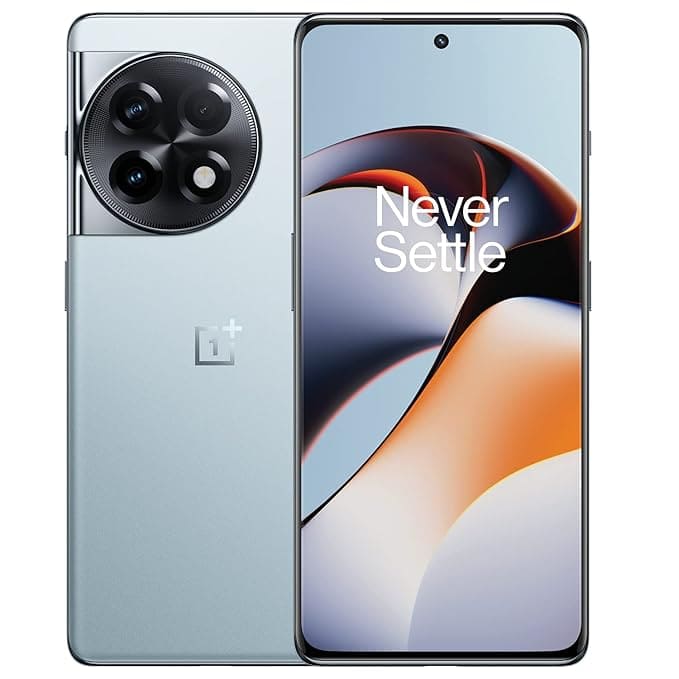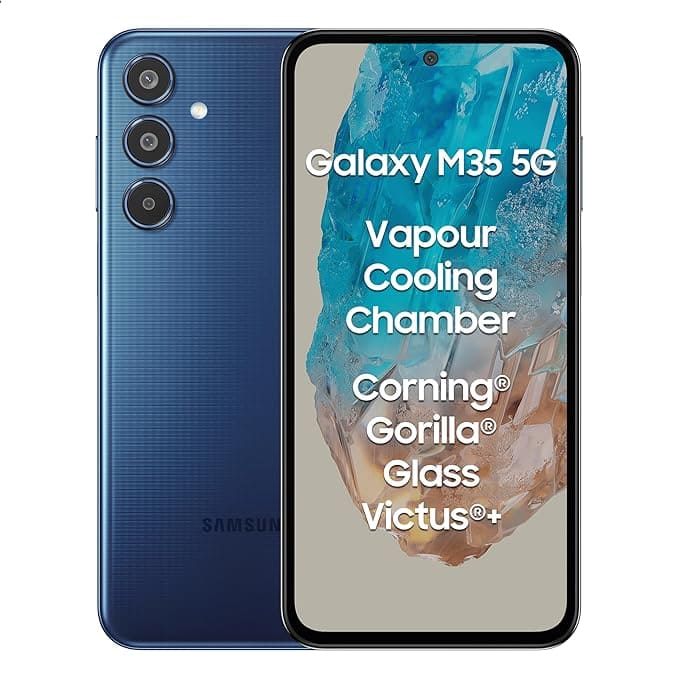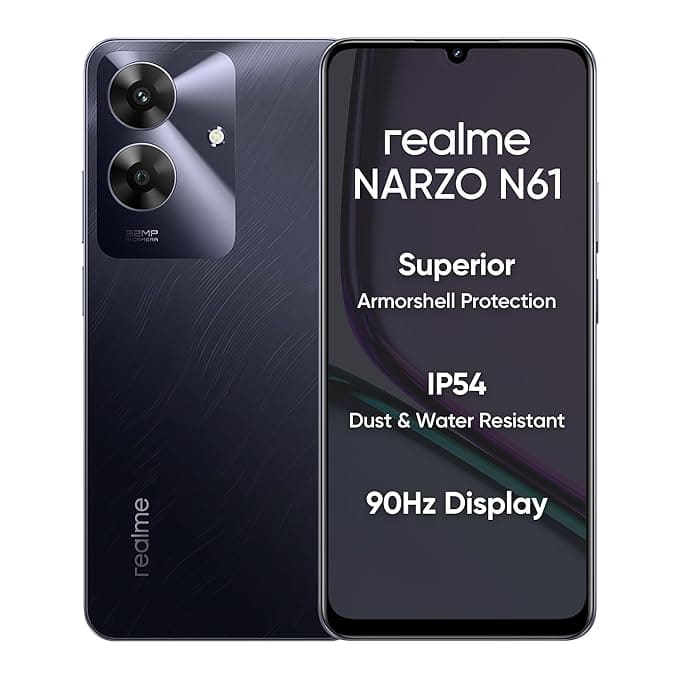Science : Term 1 Unit 1 : My Body
Unit 1
My Body

Learning Objectives
After learning this lesson, the students will be able to
• identify and describe the internal organs of humans
• list the main functions of the internal organs
• differentiate the types of teeth
• appreciate the importance of oral health
• become aware of good touch and bad touch
Let us Recall
There are some body parts hidden in the table below. Can you spot them?
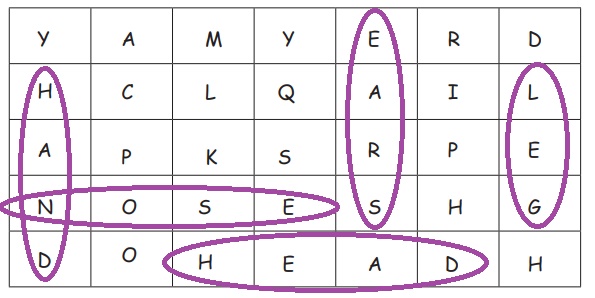
I. Internal organs
There are some body parts we can see such us eyes, nose, ears, hands and legs that we can see. Such parts that we can see are called external organs.
There are some body parts such us stomach, lungs and heart that are inside our body. We are unable to see them. These body parts are called internal organs.
Let us learn more about these parts now.
1. Brain
Brain is an important organ of our body and it is protected by the skull. It has three main parts namely:
1. Fore Brain
2. Mid brain
3. Hind Brain
Brain is the commanding centre of our body and it helps us to think and perform various actions. Every action that we do like moving our hands, sitting or walking is possible only because of our brain.
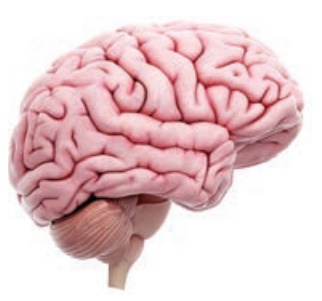
Do you Know: The human brain weighs about 1.3 kg.
Try to Answer
1. Brain ( Nose / Brain) is an internal organ.
2. We can see the internal body parts ( True / False).
Let us Play
Memory Chain – A Brain Game (Teacher led activity)
How to play?
1. Make students to sit in a circle.
2. Place a tray with picture cards of different body parts and an empty tray.
3. Now ask a student to pick a card and name the body part and put the card in the other tray.
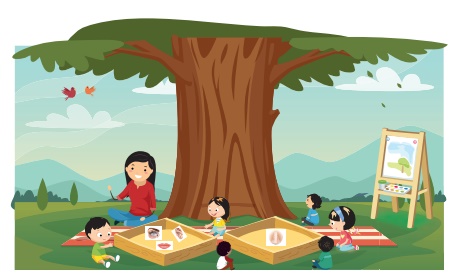
4. Call the next student. Ask him to pick another card and name the first and the second card.
5. Next student picks a card and tells the name of the first two cards and the new card.
6. In the same way, all the students take the cards one by one and tell the names in the previous cards and the name of the new card also.
2. Lungs
Lungs are a pair of spongy, sac-like organs located in the chest. They help us to breath.
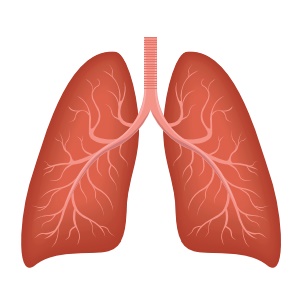
• When we breath in, we take in oxygen from air through the nose and pass it to the lungs. The lungs expands (becomes big) in the position.
• When we breath out, we give out carbon dioxide from the lungs through the nose into the air. The lungs contract (becomes small) in the position.
Let us Play
Bigger and smaller
(Teacher gives balloons to all the children)
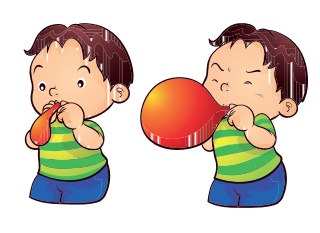
Teacher : Blow the balloon… What do you see?
Students : It becomes bigger.
Teacher : Like this, when we breath in, the lungs become bigger. If you let the air out from the balloon, what will happen?
Students : The balloon becomes small.
Teacher : Yes, like this, when we breath out air, the lungs become smaller.
The lungs act like two balloons inside our chest. As we draw air into the breathing system, the lungs get bigger as they are filled with air. When you breath out, air is pushed out of the lungs and they get smaller.
3. Stomach
Stomach is a ‘J‛ shaped bag found below the lungs. It breaks down food items and gives us energy. It contains special juice to breakdown food into energy.
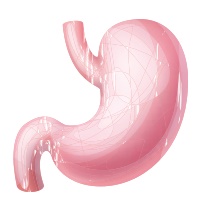
4. Heart
Our heart is the pumping organ. It pumps blood to all parts of the body. It lies in between the lungs almost in the centre of the chest. It is made up of muscles.
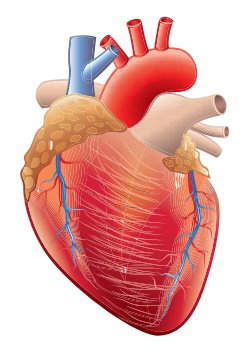
More to know: The heart beats about 72 times in a minute.
Let us Make
Stethoscope
Things we need: Flexible tube, Small funnel, Duct tape, Medium-size balloon and Scissor
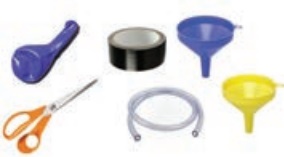
Steps to construct:
1. Put the small end of the funnel at both ends of the flexible tube tightly.
2. Tape the funnel and the tube using duct tape.
3. Inflate the balloon to stretch it out.
4. Let the air out and then cut the neck of the balloon.
5. Stretch the remaining part of the balloon tightly over the open end of the funnel, tape it in place.
6. Place the funnel end of the stethoscope on the heart and the other funnel near your ear.
7. Can you listen to the sound of the heart?
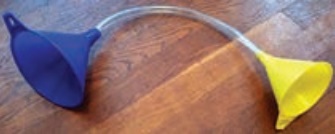
5. Kidneys
We have two kidneys. They are bean shaped organs.
The kidneys purify blood by filtering excess water and toxins.
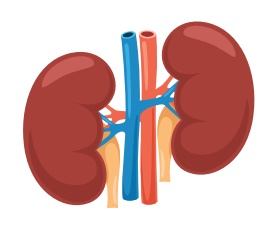
Try to Answer
Match the following.
1. Pair of spongy sac – Stomach
2. ‘J‛ shaped bag – Kidney
3. Filters excess water – Brain
4. Command centre – Heart
5. Pumps blood – Lungs
Answer:
1. Pair of spongy sac – Lungs
2. ‘J‛ shaped bag – Stomach
3. Filters excess water – Kidney
4. Command centre – Brain
5. Pumps blood – Heart
More to know: Exactly half of a single kidney is capable of doing the job that is performed by two kidneys together.
6. Bones and Muscles
Our body is made up of bones and muscles. Press your upper arms. The portion that feel hard to touch is the bone. The portion that feels soft to touch is the muscle.
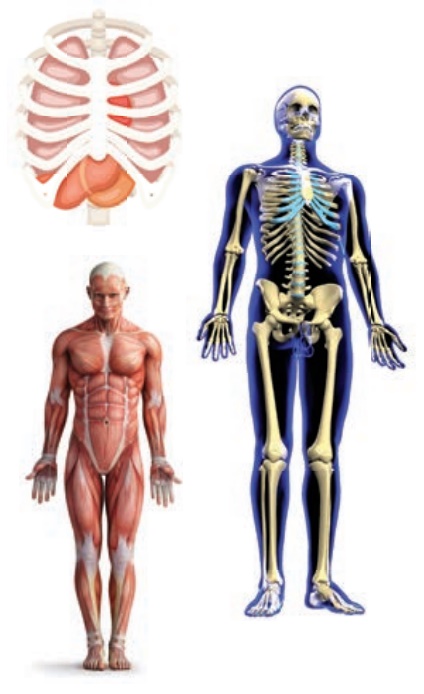
The bones give us shape. They are the frame for our body and allow us to jump, run or just lie down. Bones also protect the internal parts of the body.
Muscles are the soft parts that cover our bones. They help us to move different parts of our body by tightening or loosing, like a rubber band.
In order to maintain healthy bones we need to have healthy food, such as milk, cheese and eggs. For strong muscles, we need to exercise and stay active.
Buy vitamins and supplements
Do you Know? :Babies are born with 300 bones but by adulthood the number is reduced to 206.
Amazing Fact
17 muscles are functioning while smiling and 43 while frowning.
So smile and save energy!
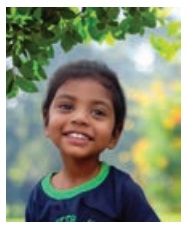
Let us Take care
If you care for your,
Brain – Sleep for eight hours
Heart – Avoid fatty food
Stomach – Eat healthy food on time
Kidney – Drink more water
Bone and Muscles – Exercise regularly
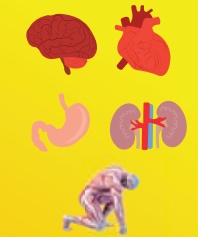
The human body has more than 600 muscles.
The longest bone is thigh bone.
The smallest bone is stapes in ear.
The longest muscle is in the thigh.
Let us Do
Muscle Activity: How our muscles send information to our brain?
Things we need: 2 large plastic cups, Large bag of rice or beans.
Activity
• Blindfold your partner
• Have your partner hold one cup in each hand.
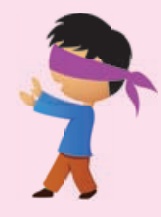
• Take the cups back and add a small amount of beans or rice to one cup.
• Return the cups to your partner‛s hands. Ask him whether they weigh more.
• If your partner says one is heavier, ask him which one?
• Here we understand that weight difference felt by the muscles was sent to the brain as message.
II. External organs
1. Teeth and its Types
The teeth are the hardest parts in our body. They are helpful for cutting and chewing the food. The teeth are found inside our mouth.
We develop two sets of teeth in our lifetime.
1. Milk teeth: The first set of teeth starts to develop from the age of six months. They are called milk teeth and they are 20 in number. At the age of 6 or 7 the second set of teeth grow after milk teeth fall.
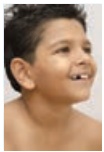
2. Permanent Teeth: Second set of teeth are called permanent teeth. There are four types of teeth: Incisors, Canines, Premolars and Molars. If permanent teeth fall, we cannot grow one more set of teeth. So, it is important to take care of our teeth. There are 32 permanent teeth.
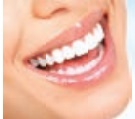
2. Importance of Oral Health
As we learnt, it is important to take care of our teeth and also our mouth. If you do not care of your mouth and teeth, you will have problems with eating and speaking.
3. Healthy Mouth
It is important to take care of our teeth and mouth. Brushing teeth, eating healthy food and regular dental checkup keep us healthy. We should brush our teeth twice a day.
4. Foods for Healthy Mouth and Teeth
• Take plenty of fruits, vegetables and dairy products.
• Drink water or milk instead of sugary juices.
• Eat candy, cake and ice cream as less as possible.
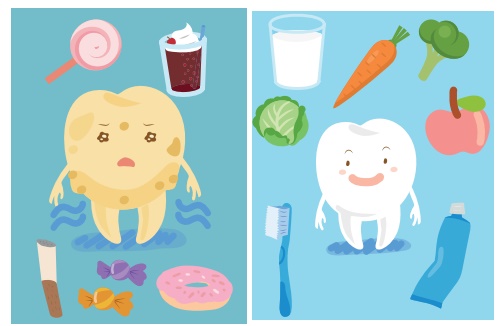
5. Taking Care of Mouth and Teeth
• Change toothbrush once in every three months.
• Avoid sticky food.
• Brush twice a day. (After getting up and before going to bed)
• Rinse your mouth with water every time after you eat.
6. Neem Toothbrush
Researchers believe that use of neem toothbrushes is the reason behind the bright smiles and healthy teeth of Indian villagers. Indians traditionally chew neem twigs to keep their gums and teeth healthy.
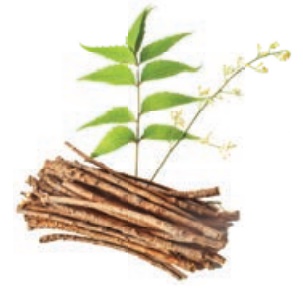
Try to Answer
Tick (✓) the foods that are good for your teeth and cross (x) the food that are bad for your teeth.
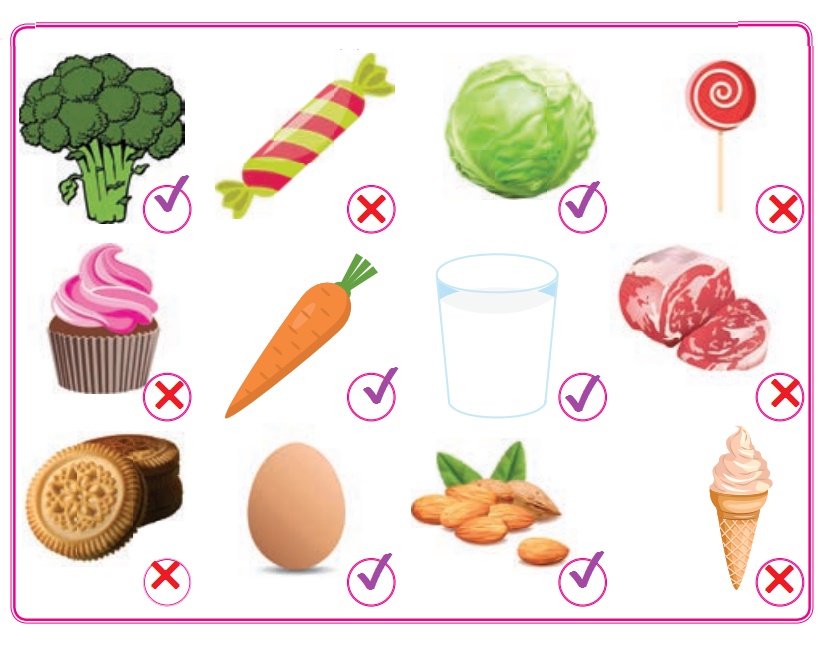
III. Good Touch, Bad Touch and Don‛t Touch
Try to Answer
Is it Good touch or Bad touch? Why?
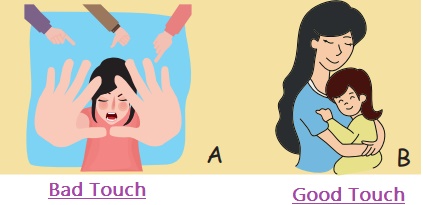
“Good touch” and “Bad touch” are the words most commonly used to explain what touch is okay and what is not okay. This helps us to understand when to tell a safe person about bad touch and ask for help. “Good touch” is a touch that cares for us or makes us feel safe. “Bad touch” is any touch that we don‛t want or makes us feel scare. Let us learn how to keep ourself safe.
Activities related to Good Touch:
• Parents‛ hug and kisses.
• Father pats you on the head.
• Friendly hugs by family members.
• Shaking hands.
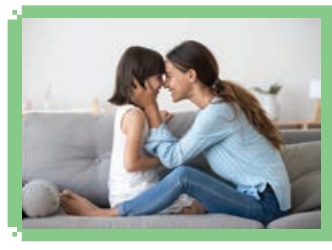
Activities related to bad touch:
• Touching the buttocks and other private parts.
• Hitting, slapping, spitting, pushing or punching, kissing.
• Activities that make you feel scared or nervous or ashamed.
• Dirty talk and dirty pictures.
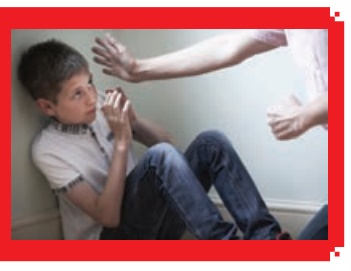
MY BODY IS MY OWN. I never allow others to misuse it.
Never be afraid to shout and say “Don‛t touch me”.
It is never your fault.
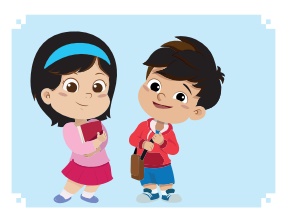
If you receive a bad touch, you must
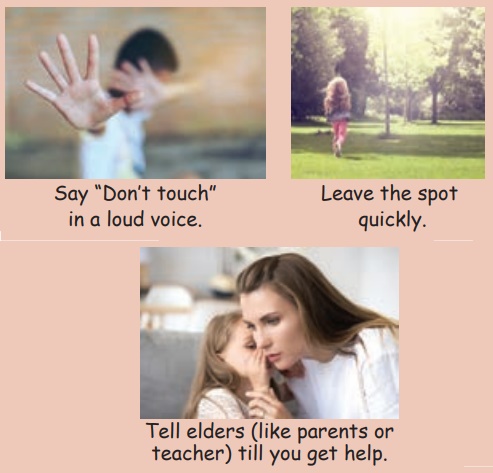
Say “Don‛t touch” in a loud voice.
Leave the spot quickly.
Tell elders (like parents or teacher) till you get help.
Students must be taught that offenders might resort to the following “Dirty Tricks”
• Your mother is admitted in the hospital. So, I have come to take you there.
• Could you please accompany me and guide me to reach this address?
• Tempting you with gifts or money.
• Distracting you with the promise of sweets or food.
• Offering to play ‘doctor game‛ and ‘hide and seek‛ game trying to touch you under that pretext.
• Pretending to show great concern for you.
Safety tips every child should know:
• Tell everything to your parents especially to mother.
• Don‛t share address and phone numbers with strangers.
• Don‛t answer the phone or open the door without an adult‛s presence.
• Never eat anything you get from strangers.
• Have emergency telephone number.
For teacher / parents:
How to prevent sexual abuse and what are the signs of sexual abuse?
• Behaviour of the child to be watched.
• Depressed and withdrawn from their peer group.
• Moving away from a particular individual, excessive dependence, decline in learning and dominant behaviour.
• Self-destructive behaviour.
• Internet can cause adverse impact.
Try to Answer
Look at the pictures and write ‘Good Touch‛ or ‘Bad Touch‛.
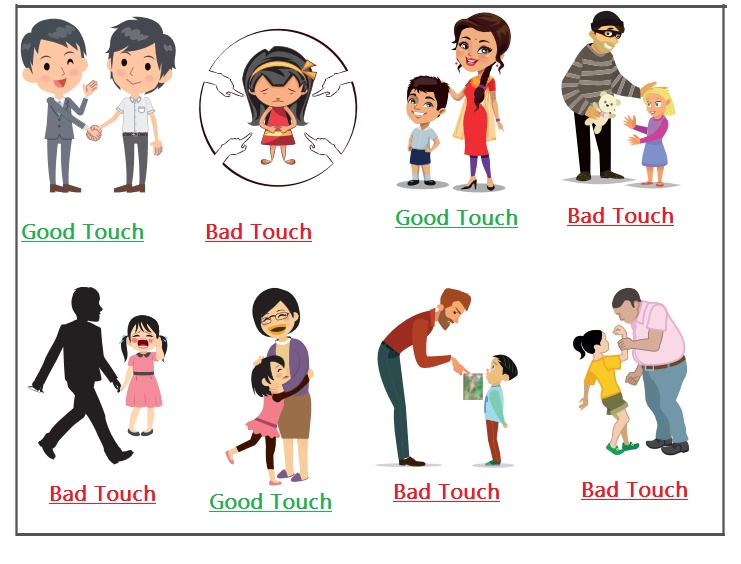
Evaluation
I. Pick out the odd one.
1. heart, legs, brain, kidney
2. eyes, ears, fingers, lungs
3. fore brain, mid brain, hind brain, nerves
II. Complete the figure with words given in the bracket.
(Kissing on the mouth, Grand parents‛ love, Hitting the buttocks, Pat of dad on head, Parent‛s hug and kisses, Showing awkward pictures)
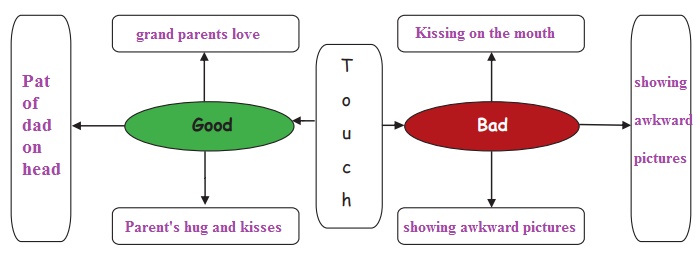
III. Find the answers from the following clues and circle the words. (First one is done for you)
i. An internal organ. Heart
ii. Organ that helps us to breath. Lungs
iii. An organ removing wastes from our body. Kidney
iv. Unfair and unhealthy touch. Bad touch
v. Everyday we should drink more water.
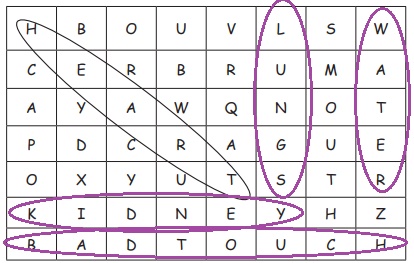
IV. Say true or false.
1. Head, hand and legs are internal organs. False
2. Heart is made up of muscles. True
3. Muscles are the soft parts that cover our bones. True
4. Brush your teeth once a day. False
5. Father patting you on your head is a good touch. True
V. Choose the correct answer.
1. ____________ is the commanding centre of our body.
a) Heart
b) Lungs
c) Kidney
d) Brain
Answer: d) Brain
2. Food is converted to energy in the ____________.
a) neck
b) heart
c) stomach
d) nose
Answer: c) stomach
3. Every day we should brush our teeth ____________ times.
a) one
b) two
c) three
d) four
Answer: b) two
4. Good touch is a fair and ____________ touch.
a) unhealthy
b) bad
c) unsafe
d) healthy
Answer: d) healthy
5. Drink a lot of ____________ every day.
a) oil
b) water
c) packed juice
d) salt water
Answer: b) water
VI Answer the following questions in one or two sentences.
1. Name the internal organs.
Stomach, lungs, heart and brain are internal organs.
2. What are the functions of brain?
Brain is the commanding centre of our body and it helps us to think and perform various actions. Every action that we do like moving our hands, sitting or walking is possible only because of our brain.
3. List out the food items for healthy mouth and teeth.
• Take plenty of fruits, vegetables and dairy products.
• Drink water or milk instead of sugary juices.
• Eat candy, cake and ice cream as little as possible.
4. How will you take care of your heart and kidney?
Heart – Avoid fatty food
Kidney – Drink more water
5. What do you do when some one touches you and you feel uncomfortable?
If your receive a Bad touch, you must say “Don’t touch” in a loud voice. Leave the spot quickly. Tell elders (like parents or teacher) till you get help.
VII. Think and answer.
1. When an unknown person disturbs you, how do you behave? Write in your own words.
I will say in a loud voice “Don’t touch”. I will leave the spot immediately. I’ll tell my parents or teachers about it.
2. Draw the organ which controls all our activities such as thinking, talking, learning etc.,
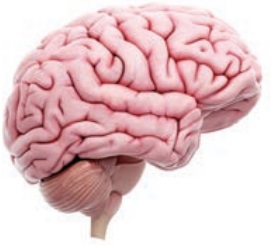
VIII. Project
1. Make a model of lungs with the help of locally available materials.
2. Make an album with the pictures of internal organs.
Let us Recall
There are some body parts hidden in the table below. Can you spot them?

Try to Answer
1. Brain ( Nose / Brain) is an internal organ.
2. We can see the internal body parts ( True / False).
Let us Play
Memory Chain – A Brain Game (Teacher led activity)
How to play?
1. Make students to sit in a circle.
2. Place a tray with picture cards of different body parts and an empty tray.
3. Now ask a student to pick a card and name the body part and put the card in the other tray.

4. Call the next student. Ask him to pick another card and name the first and the second card.
5. Next student picks a card and tells the name of the first two cards and the new card.
6. In the same way, all the students take the cards one by one and tell the names in the previous cards and the name of the new card also.
Let us Play
Bigger and smaller
(Teacher gives balloons to all the children)

Let us Make
Stethoscope
Things we need: Flexible tube, Small funnel, Duct tape, Medium-size balloon and Scissor

Steps to construct:
1. Put the small end of the funnel at both ends of the flexible tube tightly.
2. Tape the funnel and the tube using duct tape.
3. Inflate the balloon to stretch it out.
4. Let the air out and then cut the neck of the balloon.
5. Stretch the remaining part of the balloon tightly over the open end of the funnel, tape it in place.
6. Place the funnel end of the stethoscope on the heart and the other funnel near your ear.
7. Can you listen to the sound of the heart?

Try to Answer
Match the following.
1. Pair of spongy sac – Stomach
2. ‘J‛ shaped bag – Kidney
3. Filters excess water – Brain
4. Command centre – Heart
5. Pumps blood – Lungs
Answer:
1. Pair of spongy sac – Lungs
2. ‘J‛ shaped bag – Stomach
3. Filters excess water – Kidney
4. Command centre – Brain
5. Pumps blood – Heart
Let us Do
Muscle Activity: How our muscles send information to our brain?
Things we need: 2 large plastic cups, Large bag of rice or beans.
Activity
• Blindfold your partner
• Have your partner hold one cup in each hand.

• Take the cups back and add a small amount of beans or rice to one cup.
• Return the cups to your partner‛s hands. Ask him whether they weigh more.
• If your partner says one is heavier, ask him which one?
• Here we understand that weight difference felt by the muscles was sent to the brain as message.
Try to Answer
Tick (✓) the foods that are good for your teeth and cross (x) the food that are bad for your teeth.

Try to Answer
Is it Good touch or Bad touch? Why?

Try to Answer
Look at the pictures and write ‘Good Touch‛ or ‘Bad Touch‛.


